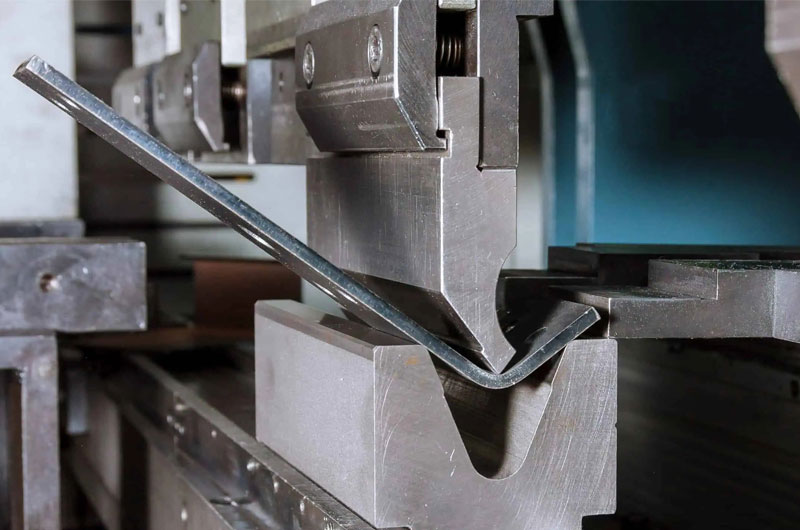Metal bending is an essential process in manufacturing industries. However, even experienced metal fabricators encounter challenges during bending operations. These problems, if not addressed, can compromise product quality, increase production costs, and lead to material waste.
In this article, we’ll explore some of the most common metal bending problems — their causes, effects, and practical solutions.
1. Cracking During Bending
Cracking happens when the metal’s outer surface is stretched beyond its ductility limit during bending. This is particularly common in brittle materials or when bending at tight radii.
Causes:
- Using metals with low ductility (e.g., high-carbon steel, hardened materials).
- Bending at too sharp an angle or too small a radius.
- Incorrect grain direction (bending against the grain).
Solutions:
- Material Selection: Use materials with higher ductility or apply annealing treatments to soften the metal before bending.
- Increase Bend Radius: Follow recommended minimum bend radius guidelines based on the material type and thickness.
- Grain Direction Awareness: Whenever possible, bend with or at a slight angle to the material grain, not against it. Bending perpendicular to the grain increases cracking risk.
2. Springback
After releasing the force from the press brake, the metal tries to return to its original shape, causing the bend angle to open up. This phenomenon is called springback.
Causes:
- High elastic modulus of the material.
- Insufficient overbending during the forming process.
Solutions:
- Overbending: Calculate the expected springback for the material and slightly overbend to compensate.
- Bottoming or Coining: Bottoming (forcing the material firmly into the die) and coining (pressing beyond the yield point) significantly reduce springback.
- Use Correct Tooling: Choose dies with tighter radii to account for material elasticity.
3. Wrinkling
Wrinkling appears as small folds or ripples, typically on the inside surface of a bend.
Causes:
- Compression forces are too high on the inside of the bend.
- Thin materials are especially susceptible.
- Improper die width or bending method.
Solutions:
- Optimize Die Width: Use appropriate die openings that support the material without allowing it to buckle.
- Increase Bend Radius: A larger radius reduces the compression stresses inside the bend.
- Material Thickness: If possible, use thicker material to reduce wrinkling issues.
4. Inconsistent Bend Angles
Parts coming out of the press brake may have different bend angles, leading to dimensional inaccuracies.
Causes:
- Variations in material properties (e.g., thickness, tensile strength).
- Improper machine calibration or setup errors.
- Uneven pressure distribution.
Solutions:
- Material Inspection: Verify the consistency of incoming materials. Minor differences can affect bend outcomes.
- Regular Machine Calibration: Ensure the press brake is level, properly aligned, and well-maintained.
- Use CNC-Controlled Press Brakes: CNC machines compensate for material variability better than manual setups.
5. Surface Scratches and Marks
During bending, tooling can scratch, dent, or otherwise damage the surface of the metal, which is especially problematic for aesthetic or corrosion-sensitive parts.
Causes:
- Dirty, worn-out, or rough tooling surfaces.
- Inadequate lubrication.
- Inappropriate material handling.
Solutions:
- Protective Films: Apply plastic films on sheet metals before bending to prevent scratches.
- Tool Maintenance: Regularly polish or replace worn tooling to maintain smooth surfaces.
- Use Softer Dies: For soft or polished metals, use urethane dies or lined tools to prevent marking.
6. Overbending or Underbending
The bend angle is either too sharp (overbent) or too shallow (underbent) compared to the design specification.
Causes:
- Inaccurate press brake programming.
- Incorrect material property assumptions.
- Incorrect compensation for springback.
Solutions:
- Pre-bend Testing: Perform test bends on scrap material to fine-tune machine settings.
- Material Certification: Work with certified materials where mechanical properties are guaranteed.
- Adaptive Bending Systems: Some advanced machines automatically adjust to achieve the correct angle.
7. Deformation or Distortion
Instead of clean, sharp bends, the entire part may warp, twist, or bow during or after bending.
Causes:
- Poor part design (e.g., too many bends close together).
- Internal stresses in the metal.
- Improper clamping during bending.
Solutions:
- Design Improvements: Modify part design to distribute bends more evenly or add stiffening features.
- Stress Relief Annealing: Heat-treat the material to reduce internal stresses before bending.
- Strategic Clamping and Supports: Use backgauges, clamps, and supports to maintain part alignment during bending.
8. Tooling Wear and Breakage
Tooling can crack, wear out, or break, leading to bad parts, downtime, and safety hazards.
Causes:
- Excessive force applied beyond tooling limits.
- Incorrect material/tooling pairing.
- Lack of maintenance.
Solutions:
- Tooling Selection: Choose tooling rated for the material’s thickness and type.
- Preventive Maintenance: Regularly inspect and replace worn or damaged tools.
- Training Operators: Proper training ensures operators use equipment within specifications.
Final Thoughts
Metal bending is as much an art as it is a science. Mastery comes from understanding both the material behavior and the nuances of the bending process.
By recognizing common problems and proactively addressing them through better material choices, correct tooling, precise machine calibration, and thoughtful part design, manufacturers can achieve consistently high-quality bends with minimal waste.

